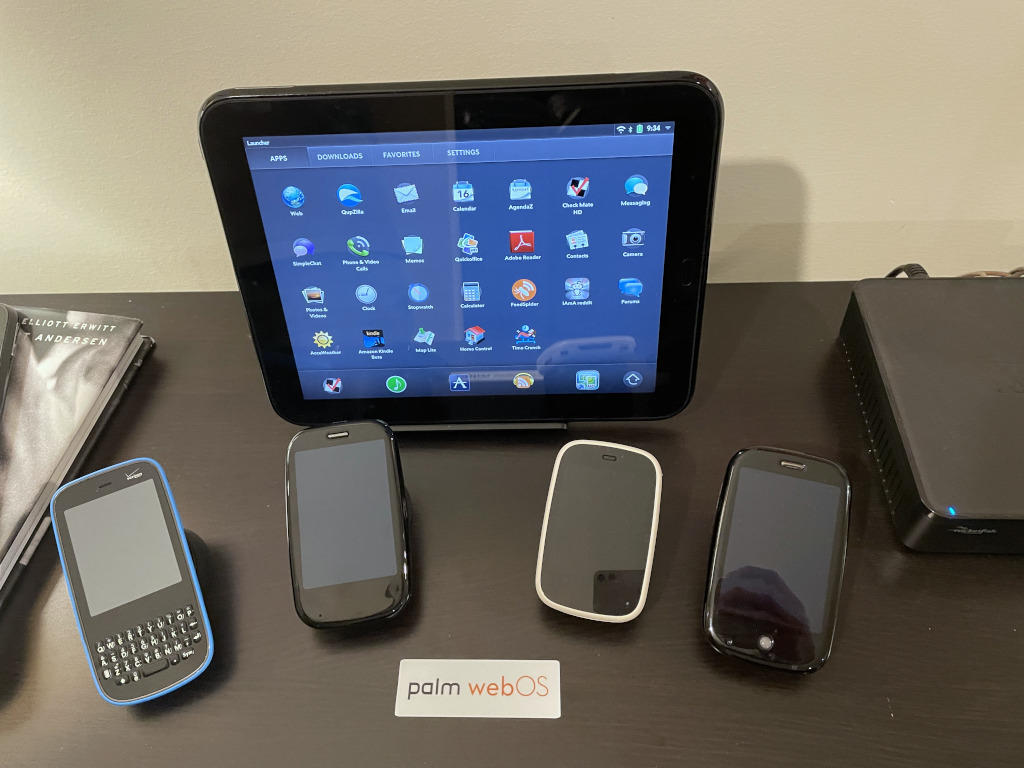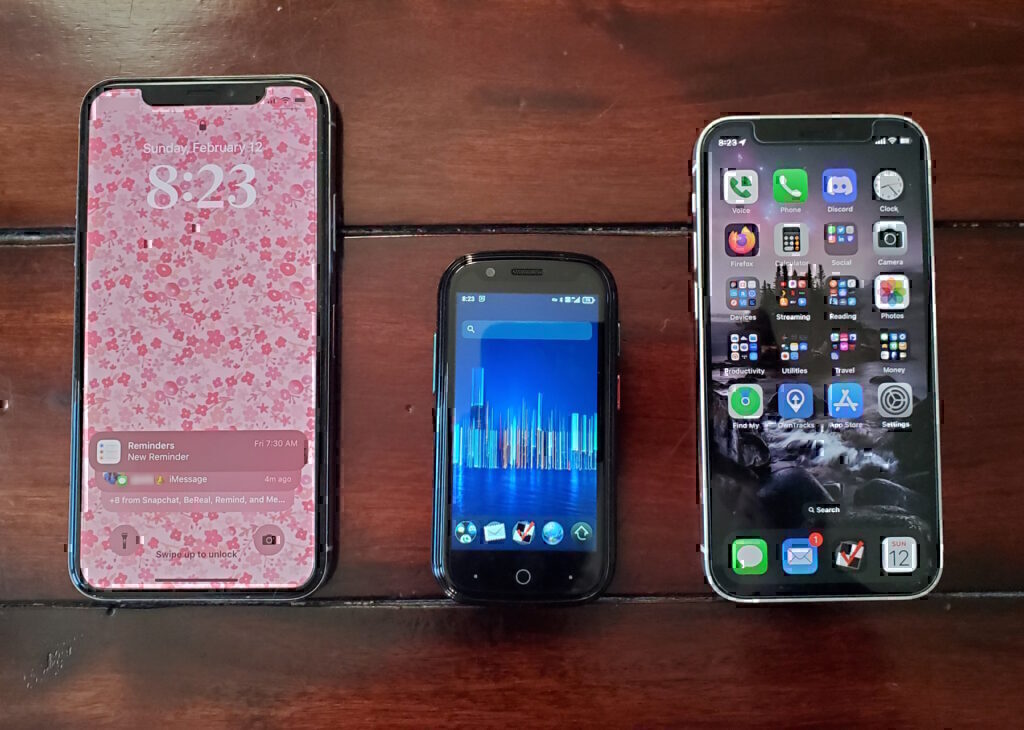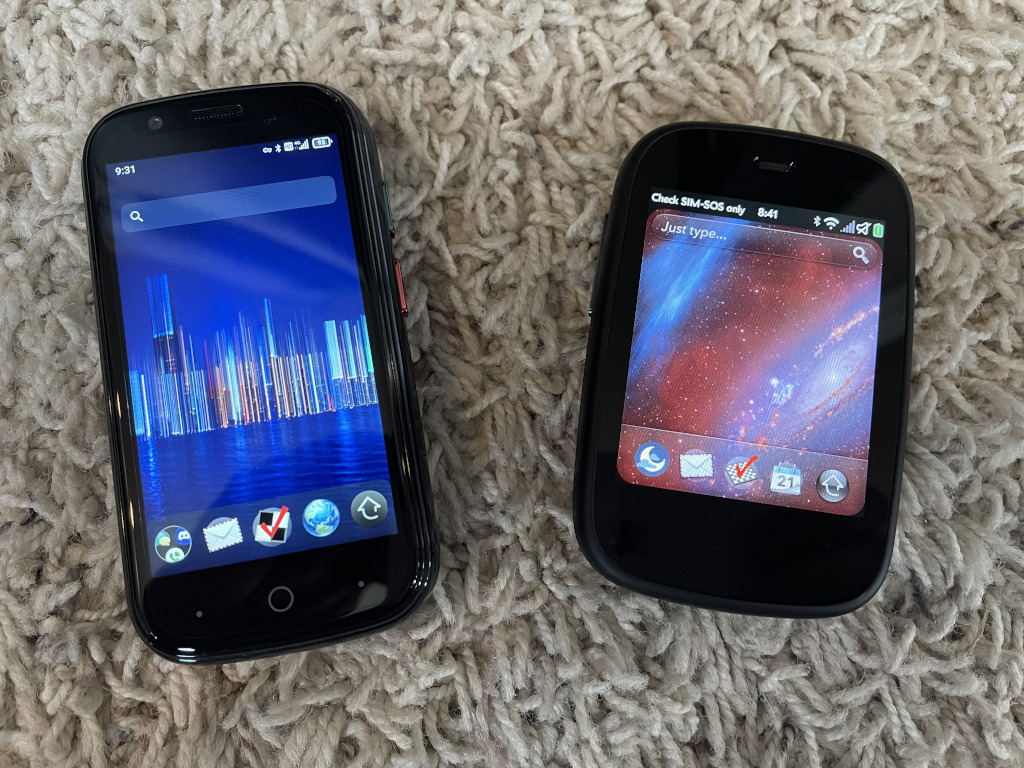In 2018 I started tinkering with a dead mobile platform I’d long had an affinity for. I briefly had one of the devices around 2012 — only shortly after the platform was killed off, a tiny little phone called the HP Veer. It was a remarkably capable smart phone with a slide-out keyboard in a sleek but diminutive form-factor. I didn’t keep it long, since I was at work on a competitive platform, but it amazed me with some of its almost clairvoyant UI decisions.
I got another one in 2019, then a tablet that ran the same OS, then a few more variations of the phone, then a few more tablets… at the time, you could get them for a few bucks on eBay, and they were remarkably delightful. But no new apps had been developed for them for years, and all the back-end infrastructure was gone. So I found some old websites, joined the still-active forum, even bought a couple books, and started to learn how to create things for the platform again…

This remained an occasional hobby until the pandemic hit, and suddenly we were all stuck at home, with nowhere to go and lots of time to kill. And I started to think about how I could really make this little museum of mobility useful around the house. Throughout the pandemic, I restored the SDK, set-up a Discord server for the remnants of the community, re-assembled an App Store from code, archives and repositories from previous users, updated a long-dead podcast app and created a new directory service for it, built a proxy so old devices could use the modern web, and developed more than a dozen brand new apps for it, with regular updates and features based on community feedback. It became a little ecosystem again, because a few people invested in it. I even used a Veer as a daily driver until the 3G shutdown happened.
We’ve all kind of accepted our fate when it comes to smart phones. Apple and Google make the OS, control the app ecosystem, and we get to choose from a virtually identical selection of slabs as our hardware, made by one of three vendors, all competing to make bigger phones every year, without adding any new features except evolutionary improvements in the cameras. Its not just boring, its stupid. Why do people keep buying the same thing? What happened to innovation and creativity and new ideas?
As my platform development hobby ran its course, I started looking for alternatives. There are a few early-stage efforts out there. I ran Jolla’s Sailfish OS on a Sony Xperia, tried out Ubuntu Touch on my Pixel 3a, entertained the idea of buying a Blackberry Key2 (another dead platform), and got LuneOS running on a Nexus 5. All contain promising ideas, but all lack an ecosystem that could really help them compete — their best chance lies in an Android compatibility layer, giving them access to apps from Google’s fiefdom. The closest-to-viable alternative was GrapheneOS, a de-Googled Android distro that was fully complete on my Pixel — once I added back Google look-a-like services.
But even with some OS choice (or the illusion of it), the hardware options were still boring. Until I bought my Jelly 2…

Here it sits, with my daughter’s iPhone XS to the left, and my iPhone 12 mini to the right. Its obviously distinctly small — and that’s a good thing. Compared to the Veer, it lacks the slide out keyboard, but has a taller screen, slightly narrower body, and a fatter depth which allows for a decent battery.
Its from a Chinese manufacturer, Unihertz, and previous experience with Chinese hardware left me a little wary, but so far I’m pretty impressed.
The OS is a relatively clean Android 11. Their customizations and pre-loads are lightweight, and mostly there to exploit the unique hardware characteristics. The phone has an indicator light that you can configure to alert you of only the types of notifications you want. It has an extra programmable hardware button, and an infrared port — the accompanying app let’s you control a massive range of devices. (I was alone in a waiting room recently, with a TV blaring in the corner, its hardware controls disabled, so I quickly configured my Jelly to “learn” the TV then muted it for some peace and quiet!) The phone also came with an app, usually only available to those with root access, that allows you to clone NFC cards — a delightfully hacker-like tool that can just as easily be used for evil and good!
Other hardware features include a battery that lasts all day, even with fairly demanding use, and an actual headphone jack (don’t let Apple tell you they don’t have room in their massive phones for a headphone jack, when this diminutive little phone handles it with aplomb!) Touch-sensitive hardware buttons ensure you don’t have to struggle with awkward gestures on the tiny screen, and harken back to an era where industrial design served the user, not the other way around. And the camera is fine — not 8 billion gigapixels with multiple protruding lenses and AI powered optimization — just a workable camera that takes decent pictures in most lighting. Since I’m not an Instagram influencer, its really all I need.

In fact, for most people, I think something like this is really all they need. I get that its too small for most, but I appreciate someone pushing in a direction opposite the trend to put tablet in our pockets. There’s also the reality that Unihertz probably isn’t big enough to keep up to date with Android updates, and there are some security considerations. But then, the Veer hasn’t been updated since 2011, and I never had any issue there — not having many apps installed (or many apps to install) is a great way to keep your threat surface small! Unihertz also included a platform-level firewall, allowing you to restrict or disable Internet access on a per-app basis.
I’m not done trying out unusual hardware — I have my eye on a Japanese phone next. But this is the closest thing I’ve found to replacing the friendliness and fun of my Veer, and I’m pretty happy to have a small smart phone that fits in my pocket again.*
*I also tried the “Palm” PVG100 (aka Pepito), which is totally pocketable. It didn’t get a write-up here because its battery couldn’t make it through the day. It was a nice idea that flopped in execution, and as fun as it was to hold, I wouldn’t recommend it — to anyone.




All of my Veers are no longer working. 🙁 Jelly is cute, but still costs around 150 USD here in the Philippines. May I know the launcher or theme you used to make Android look like webOS?
Hi, thanks for great artcule and for fining the modern alternative for super mighty baby from Palm/HP))